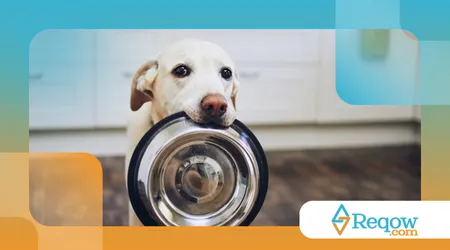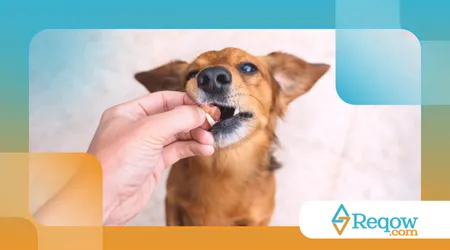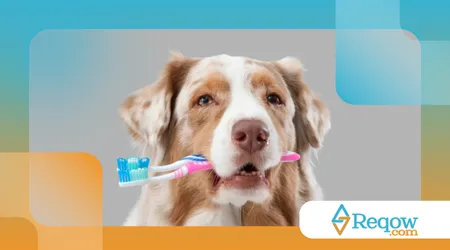How to teach your dog to release objects from his mouth

Teaching your dog to release objects from his mouthThis skill goes far beyond a simple party trick; it's a tool for safety, impulse control, and, fundamentally, for building a relationship based on mutual trust.
Advertisements
Teaching this command prevents household accidents, such as ingesting dangerous items, and minimizes frustration during fetch games, making them more enjoyable.
This article, based on the science of animal behavior, offers updated and humane techniques for you and your dog.
Why is object possession a challenge when teaching your dog to release objects from his mouth?
The behavior of grabbing and not letting go of objects is deeply rooted in canine instinct.
For a dog, possession of something valuable—a toy, food, or even a stolen shoe—is a resource that needs to be defended.
Advertisements
Often, resistance to letting go arises from past experiences where the object was simply removed by force, generating a negative association.
It is essential to recognize that by imposing withdrawal, the guardian may inadvertently intensify resource guarding behavior.
Modern training focuses on positive exchange, demystifying the idea that the dog needs to “lose” something.
What is the first step to success with the “Larga” command?
The key to the "Drop It" command is establishing a high rate of positive reinforcement. First, you must have a substitute of equal or greater value than the item the dog is holding.
It's not about competing for ownership, but about offering a bargain that's advantageous to the animal.
Start in a calm environment with minimal distractions to ensure your dog is fully focused on your instruction and the impending reward.
What are the most effective positive exchange techniques?
The exchange technique is the most recommended by ethologists and behavioral trainers.
For example, if your dog has a toy, present a tasty treat by placing it near his nose.
The exact moment he opens his mouth to sniff or grab the treat, say the command “Drop it” and then deliver the treat.
Read more: Games that help with training and strengthen the bond
It is crucial that the command word is associated with the release action and the reward immediately afterward.
Practice in short, fun sessions, keeping the animal's motivation high.

How to avoid resource hoarding during training?
Avoiding resource guarding (or possessive ownership) requires patience and sensitivity.
Never chase your dog or try to take the object by force, as this only reinforces that the item is extremely valuable.
Find out more: How to train your dog to walk without pulling on the leash
Stay calm and always use the exchange tactic. Think of it like a business negotiation: one party gives up an asset only if they receive something of greater benefit in return.
If the dog drops a piece of bone, the reward should be something he values even more, such as a piece of cheese.
What do experts say about intermittent reinforcement?
Once your dog has mastered the command consistently in controlled environments, it is important to introduce intermittent reinforcement.
According to operant conditioning studies, not rewarding a dog every time he gets it right strengthens the behavior in the long run, making it more resistant to extinction.
A study published in 2023 by Applied Animal Behavior Science highlighted that the variation in reward (sometimes a treat, sometimes praise and play) increases the dog's expectations, resulting in faster and more reliable responses.
When and how to generalize the “Drop” command?
Generalization is the stage where the dog learns that the command applies to different objects, locations and in the presence of various distractions.
Start practicing with items of decreasing value and in progressively more challenging environments, such as in the backyard or on a walk.
Look how interesting: Care to avoid dehydration in puppies
So, ask him teach your dog to release objects from his mouth while another dog walks down the street (at a safe distance, of course).
What are the most common mistakes in release training?
A common mistake is to punish the dog for initially taking the object. Scolding only teaches the dog to hide or swallow the item quickly.
Another serious mistake is returning the item immediately after the dog releases it. This teaches the dog that the command is just a brief respite, not a renunciation.
Keep the object out of reach for a few minutes and only then, if appropriate, offer an alternative toy.
The ultimate goal is teach your dog to release objects from his mouth under any circumstances.

How important is the Reward Value Chart?
To ensure the effectiveness of the exchange method, it's essential to understand the hierarchy of reward values for your dog. What's valuable to you may not be to him.
| Value Level | Reward Type (Examples) | Suggested Use |
| High | Pieces of meat, cheese, peanut butter, tummy rubs (massages) | For very high value items (Ex: stolen food) |
| Average | Commercial dry snacks, carrot pieces, enthusiastic praise | For favorite toys or in the generalization phase |
| Low | Verbal praise (“Good boy!”), clicker, little pats on the head | For routine practice with low-interest items |
Training should be a positive and fun experience for both of you. Teaching your dog to release objects from his mouth It is an investment in the animal's well-being and safety.
How does training the “Drop It” command impact the relationship?
The ability to teach your dog to release objects from his mouth strengthens positive leadership and the bond between guardian and animal.
Instead of seeing himself as an adversary, the dog begins to see his owner as a predictable source of good things.
It is estimated that, in homes that use methods based on positive reinforcement, the incidence of defensive biting related to resource guarding is 78% lower (behavioral study data in 2024). This statistic is a stark reminder of the effectiveness of humane approaches.
What is the difference between “Larga” and “Solta”?
Although similar, “Let go” is typically used to ask the dog to release something it is holding, while “Let go” can be more inclusive, including releasing a person, as in cuddle (hug).
So, use a consistent and clear command. Use "Leave it" when your dog is chewing on the remote and you need to teach your dog to release objects from his mouth.
Are you ready to build that foundation of trust and teach your dog to release objects from his mouth?
Mastering the "Leave it" command is the pinnacle of nonviolent communication. It takes time, consistency, and, above all, respect for your dog. Don't give up and celebrate every small step forward.
Frequently Asked Questions
What should I do if my dog swallows the object?
If it's a small, non-toxic object, observe it. If it's dangerous or there are signs of choking, don't hesitate: seek veterinary attention immediately.
Prevention, through the “Let Go” command, is the best medicine.
Can I use water or spray to make my dog release it?
No. Aversive methods (punishment, sprays, water jets) destroy trust, generate fear, and can increase possession aggression. Always use positive feedback.
At what age should I start teaching?
Training can begin as soon as your puppy comes home (starting at 8 weeks). Young dogs learn quickly, and prevention is always easier than correction.
++ How to convince your dog to return the ball you threw
